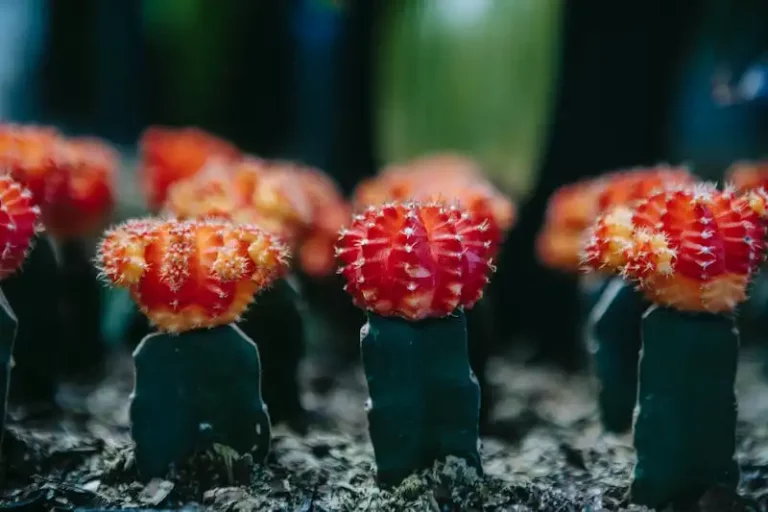Cosmos flowers have been enjoying popularity for many years due to their bright and vibrant petals. These flowers, also known as Cosmos bipinnatus, are native to Mexico and Central America. They are a self-seeding annual plant, meaning that they will drop seeds after blooming and will reappear in your garden year after year.
When it comes to planting Cosmos flowers, it is important to choose a well-draining soil. If your soil is heavy and compacted, you may need to loosen it with amendments such as compost or sand. Cosmos plants require full sun, so choose a place in your garden where they will receive at least 6 hours of direct sunlight each day.
Cosmos flowers are relatively easy to care for, making them a favorite among gardeners. They have a high tolerance for drought and are also resistant to many common pests and diseases. However, there are a few things you can do to help support the continuous blooming of your Cosmos plants. Deadheading, or removing the spent flowers, will encourage new growth and prevent the plant from going to seed too quickly.
If you want to propagate your Cosmos flowers, you can save the seeds from the dried flower heads and plant them in the spring. Another method of propagation is by division, where you dig up the plant in early spring and separate it into smaller clumps. Cosmos flowers can grow quite tall, reaching heights of 2-4 feet, so it is important to provide them with support. Staking or caging the plants can help prevent them from toppling over in strong winds or rain.
While Cosmos flowers are generally disease-resistant, they can occasionally be affected by bacterial diseases like leaf spot or fungal diseases like powdery mildew. Regularly inspecting your plants and treating any problems as soon as they arise can help keep them healthy. If you do notice pests like aphids or spider mites, a neem oil spray can effectively control their infestations.
In conclusion, Cosmos flowers are a popular choice for gardens due to their brilliant and continuous blooming. With their fern-like foliage and fizzy petals, they add a touch of vibrancy and charm to any landscape. Whether you are a beginner gardener or a seasoned pro, Cosmos flowers are a great plant option for adding color and beauty to your outdoor space. So, consider adding these delightful flowers to your garden and enjoy their year after year blooming!
Cosmos Flower Care – Tips For Growing Cosmos
When it comes to growing cosmos, there are a few key steps to keep in mind. Here is a guide to help you care for your cosmos flowers:
1. Choose the right variety: Cosmos flowers come in a wide range of colors, from bright pinks and purples to pastel shades. Choose a variety that suits your preferences and the color scheme in your garden.
2. Plant in the right place: Cosmos plants prefer full sun exposure, at least 6-8 hours of direct sunlight each day. They also require well-drained soil, as they don’t tolerate standing water.
3. Watering: Cosmos plants have deep roots, so watering deeply and infrequently is the key. Water the plants when the top inch of soil feels dry. Avoid overwatering, as it can lead to fungal issues.
4. Support taller varieties: Some cosmos varieties can grow quite tall, reaching up to 4-6 feet. If you are growing these taller varieties, provide support such as stakes or cages to prevent the plants from flopping over.
5. Deadheading spent blooms: To encourage continuous blooming, it is important to deadhead the spent flowers. This will redirect energy towards new growth and prolong the blooming period.
6. Propagate seeds: Cosmos plants are annuals, meaning they complete their life cycle in one year. To keep them growing each year, save seeds from spent flowers and sow them in the soil the following season.
7. Consider dividing and repotting: If your cosmos plants become overcrowded, consider dividing them and repotting them in different areas of the garden. This will give the plants more space to grow and spread.
8. Protect from deer and other pests: Cosmos plants are generally deer-resistant, but they may attract other pests. If you notice any pest issues, take appropriate measures to protect your plants.
9. Keep an eye on temperature: Cosmos flowers thrive in warm temperatures, between 70-80°F (21-27°C). Cooler temperatures can slow down growth and flowering.
10. Pruning: Cosmos plants have a bushy habit and may require pruning to maintain their shape. Prune back any leggy or overgrown foliage to encourage denser growth.
11. Fertilizer: Cosmos plants generally don’t require fertilizer, as they can grow well in average soil. However, if you notice poor growth or yellowing foliage, you can consider adding a balanced fertilizer to provide extra nutrients.
12. Store seeds: If you want to save seeds for future planting, collect them from fully matured flowers. Allow the flower heads to dry completely, then remove the seeds and store them in a cool, dry place.
By following these basic care steps, you can enjoy the beauty of cosmos flowers in your garden. Their daisy-like petals and gorgeous colors will surely add a vibrant touch to your outdoor space.
How to Grow Cosmos Flowers
If you want to grow cosmos flowers in your garden, follow these guidelines for successful cultivation.
Choose the Right Type: There are several types and colors of cosmos flowers to choose from, including pink, white, and orange. Select the ones that appeal to you the most.
Provide Full Sun: Cosmos flowers thrive in full sun and are likely to produce more blooms when exposed to plenty of sunlight.
Prepare the Soil: Cosmos flowers prefer well-draining soil. If your soil doesn’t drain well, consider adding organic matter or other amendments to improve its texture.
Water Regularly: While cosmos flowers are drought-tolerant, they still need regular watering, especially during dry spells. Water the plants deeply but infrequently to encourage deep root growth.
Planting: Plant cosmos flowers in early spring, once the danger of frost has passed. They can be started from seeds directly in the garden or transplanted as seedlings.
Spacing: Space the plants about 12-18 inches apart to allow for proper air circulation and prevent common fungal diseases.
Attract Pollinators: Cosmos flowers are known to attract bees, butterflies, and other pollinators. Plant them near other flowering plants to create a pollinator-friendly garden.
Manage Weeds: Keep the area around the cosmos flowers free of weeds, as they can compete for nutrients and water.
Deadheading: Remove spent flowers regularly to encourage continuous blooming throughout the season.
Pruning: Although cosmos flowers don’t require heavy pruning, you can pinch back the tips of the stems to promote bushier growth and prevent them from becoming leggy.
Deal with Common Issues: Cosmos flowers are relatively problem-free, but they may occasionally suffer from diseases such as powdery mildew. If you notice any issues, promptly remove affected plants to prevent the spread.
Harvest Seeds: Cosmos flowers produce seeds that can be harvested for future planting. Allow the flowers to fully mature, and then collect the seedheads.
Enjoy the Benefits: Growing cosmos flowers not only adds color to your garden but also provides food and habitat for pollinators. Plus, they’re often used in flower arrangements.
Hardiness Zone: Depending on the type of cosmos flowers you choose, they can be grown in both warm and cool climate zones. Check the specific hardiness information for the particular type.
Propagation: Cosmos flowers can be easily propagated by collecting and sowing seeds. Simply sprinkle the seeds on moist soil and lightly cover them. Keep the soil evenly moist until the seeds germinate.
Caution: Keep in mind that some sources suggest that certain varieties of cosmos flowers may be poisonous to pets if ingested. If you have pets, err on the side of caution and choose non-toxic plants.
Moving Cosmos Flowers: If you need to move cosmos flowers to a different location, it’s best to do so when they’re still small to avoid disturbing their roots too much.
Popular Use: Cosmos flowers are commonly grown as border plants, in containers, or as filler plants in garden beds.
Remember to take photos of your cosmos flowers in full bloom to cherish the beauty of their vibrant colors.
Varieties of Cosmos
Cosmos flowers come in a variety of beautiful colors, shapes, and sizes. Here are some popular varieties to consider for your garden:
- Sensation: This variety of cosmos has large, vibrant blooms with overlapping petals. It is a quick-grower and can reach up to 3 feet tall.
- Double Click: As the name suggests, this type of cosmos has double rows of petals, giving it a fuller appearance. It comes in various colors and is a favorite among gardeners.
- Seashells: With its tubular petals that resemble seashells, this variety adds an interesting touch to any garden. It is tall and reaches heights of up to 5 feet.
- Bright Lights: Known for its vibrant and eye-catching colors, this variety blooms early and continuously throughout the summer. It attracts pollinators with its bright blooms.
- Purity: If you prefer white flowers, this variety is a great choice. Its pure white blooms stand out in any garden and provide a lovely contrast against green foliage.
- Candystripe: This cosmos has unique bi-color flowers, with white petals that are elegantly striped with pink. It adds a touch of whimsy to garden borders and is a favorite for cut flower arrangements.
Growing different varieties of cosmos will not only provide a variety of colors and flower forms but also extend your blooming season, as they have different blooming attributes. It’s important to choose a variety that suits your taste and the conditions in your garden.



